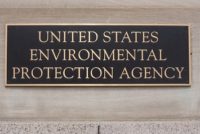Category: Chemicals
Today’s workplace uses thousands of chemicals, many of which are hazardous. The resources in this section will help guide you in the safe and legal identification, storage, transport, and use of these chemicals, and in making sure that your employees right to know how to be safe around such substances is provided, as required by law.
The Process Safety Management (PSM) standard applies to equipment like boilers that don’t involve highly hazardous chemicals if the equipment is interconnected with or located near equipment that does, the Occupational Safety and Health Review Commission recently decided.
In its latest action to implement the 2016 amendments to the Toxic Substances Control Act (TSCA), the EPA has proposed regulations under which it will review claims by businesses that information about chemical substances on the confidential portion of the TSCA Inventory must be protected from disclosure to the public.
According to a rare Management Alert from the EPA’s Office of Inspector General (OIG), information reported to the Agency on chemicals released to the environment by publicly owned treatment works (POTWs) conflicted with information the OIG obtained separately from the Agency.
When deciding whether to manufacture a new agricultural chemical, companies need to determine if their product will be subject to registration under the Federal Insecticide, Fungicide, and Rodenticide Act (FIFRA). Registration is a costly, technically demanding, and prolonged process that, in conjunction with the sales forecast, may result in the firm deciding not to manufacture […]
Safety data sheets (SDSs) for several bulk flavorings failed to list hazardous substances, according to National Institute for Occupational Safety and Health (NIOSH) findings. Out of 26 bulk liquid flavorings obtained from two U.S. coffee roasting and packaging facilities, 21 contained diacetyl, and 15 contained 2,3-pentanedione.
In a congressional hearing, a lineup of advocates for worker safety faulted the way the EPA is using its new authority under the 2016 amendments to the Toxic Substances Control Act (TSCA) to shield workers from the occupational exposure to hazardous chemicals.
If your business manufactured or imported mercury or mercury-added products, or intentionally used mercury in a manufacturing process for immediate or eventual commercial advantage during calendar year 2018, you may need to file a report with the EPA by July 1, 2019.
The U.S. Chemical and Safety Hazard Investigation Board (CSB) recently released a Safety Spotlight recommending that employers closely apply industry consensus standards to safeguard employee and public safety. Titled “The Importance of Industry Safety Guidelines, Codes, and Standards,” the report highlights the CSB’s role in accident investigation and focuses on several safety codes and standards […]
In a new final rule issued under the Toxic Substances Control Act (TSCA), the EPA is banning the production and distribution of methylene chloride for paint and coating removal by consumers.
Chemical assessments, a core activity at the EPA, are conducted under two separate but closely related programs—the Integrated Risk Information System (IRIS) and implementation of the Toxic Substances Control Act (TSCA) and its 2016 amendments. The Government Accountability Office (GAO) recently released a report on how these two programs are completing their mission to evaluate […]










